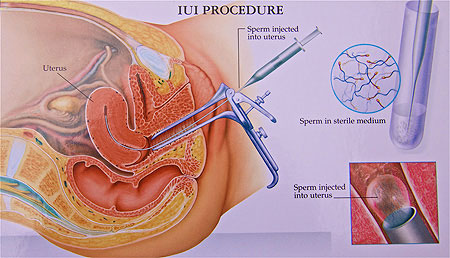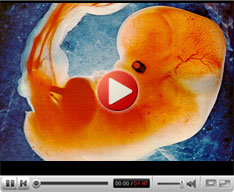
Know Infertitlity
Infertility treatments
Diagnosing InfertilityMale:
Obstetrics and Gynaecology
Infertility Treatment Services
Andrology |
Intra Uterine Insemination (IUI)Artificial insemination is a procedure in which a sperm is directly inserted into a woman's cervix, fallopian tube or uterus with the sole purpose of making the sperm's trip shorter and to bypass any obstructions, in turn making pregnancy possible. Intrauterine insemination (IUI) is an assisted reproductive technique by which washed and processed sperms will be inseminated into uterine cavity at the time of ovulation. It is the most preferred and common form of artificial insemination and is recommended by doctors as an initial form of treatment for infertility because it is a simple procedure with very few side effects. However, the drawback is that success rates of pregnancy due to artificial insemination are not that high when compared to other advanced techniques and procedures.  Ideal Candidates for IUIIUI is a fertility treatment for couples who have been tryingto conceive for at least one year with little success.Your doctor may recommend IUI in case of:
IUI TechniqueIn the IUI technique, you will be given oral drugs (such as Clomephene) or injections (Gonadotrpins) to stimulate the ovaries to produce good number of eggs. The development of eggs inside the ovaries is monitored via Ultrasonography which is also referred to as Follicular study. Once the eggs have acquired sufficient size (more than 18mm) along with properly developed endometrium (more than 8mm), HCG injection is given to rupture the follicle. While you are ovulating, your partner will be asked to provide semen sample and the sperm is then washed in a laboratory within one hour of ejaculation. Washing the sperm separates the semen from theseminal fluid and thereby increases the chances of fertilization by removing chemicals present in the semen that in turn may cause discomfort for the pregnant woman. It involves liquefying the sperm at room temperature for 30 minutes following which a chemical is added and centrifuged to separate out the most active sperm. Thisis then placed in a catheter and inserted through the vagina and cervix directly into the uterus. This process maximizes the number of sperm cells that areplaced in the uterus, thereby increasing the chances of conception. TheIUI procedure also does not consume much time and involves minimal discomfort.Few women may experience cramping during the procedure and light bleeding afterward. Once the procedure is complete, your doctor will immediately advise you to lie down for sometime to give the sperm a chance to get to work after which you can resume your daily activities. Factors that lower your chance of success include:
Pregnancy Rate : 10 to 15% |
Our TeamNews & EventsClinic LocationVideo Gallery |















